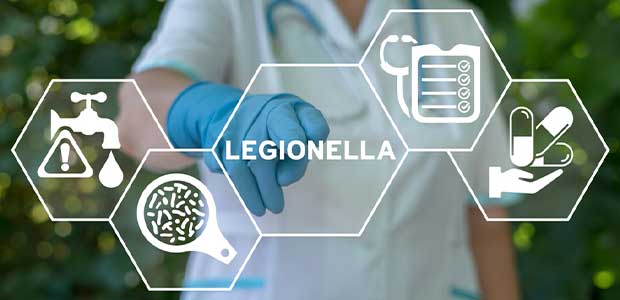
Managing Legionella in Old Buildings
Additional control measures may be required if you cannot undertake certain routine tasks.
- By Jonathan Twaites
- Mar 07, 2023
Older properties can provide unique problems when trying to manage water systems.
It may also be that the water systems have not been refurbished since the first installation. Refurbishment works on older systems may lead to modifications that if improperly done, can lead to redundant pipework, dead legs and dead ends. These can lead to water stagnation that can provide ideal conditions for bacterial growth such as Legionella.
Schools, colleges and universities are also more likely than other sectors to have older properties under their control.
Legionella Risk Assessment
All water systems need to be risk assessed, and this includes older water systems. This is especially important if there is no current legionella risk assessment present. Your legionella risk assessment will assess the current installation as far as reasonably practicable, but there may be issues with accessing the whole water system.
Access Issues
Where there are access issues, there will likely be assumptions that need to be made which might limit the conclusions of the risk assessment. Limitations on the findings of the risk assessment can include:
- The presence of asbestos, which must not be disturbed;
- A lack of boarding in a loft space, meaning that the cold water storage tank cannot be safely accessed for inspection, routine monitoring or a clean and disinfection;
- The presence of vermin (rats, pigeons, etc.) where there are safety issues relating to excrement
Any assumptions or limitations should be clearly defined in the risk assessment along with recommendations on how to manage the risks identified taking these limitations into account.
What do you do if you cannot access parts of your water system to assess the risk or complete the required tasks in the UK Health and Safety Executive’s HSG274 Part 2?
Your site-specific legionella risk assessment will identify additional controls, based on the findings of the assessment.
It is likely that additional control measures above and beyond the minimum requirements of HSG274 Part 2, and/or HTM 04-01 in healthcare settings, may be required if you cannot undertake certain routine tasks.
Additional controls might include tasks such as, but not limited to:
- Additional sampling for legionella to ascertain the efficacy of the current regime;
- Increasing the frequency of your Legionella flushing regime;
- Chemical additions to supplement the temperature controls, especially where temperature control proves to be ineffective. The application of any additional controls should be carefully considered with your independent advisor or Authorising Engineer [Water].
Legionella Sampling
One useful activity would be to undertake bacterial sampling, such as routine legionella sampling, to gather more information on the performance of your control regime.
If unsatisfactory results are obtained, then a review of your control measures should be undertaken, as your current regime could be ineffective. If satisfactory results are obtained, then it can help you demonstrate that what you are doing is effective, especially if you have increased controls over the minimum requirements in HSG 274. It is important to remember though that a “not detected” microbiological result does not mean that there is no risk, and you should focus on maintaining your control measures.
Cold Water Storage Tanks
If your cold-water storage tanks cannot be accessed for safety reasons to carry out the annual inspection, then sampling for general bacterial levels or TVCs may also provide additional information as to the quality of the water supplied from the tank. This can help reassure you that if bacterial results are satisfactory, then it provides evidence that the water system is under control. Always seek access to competent help when planning Legionella sampling regimes and interpretation of results.
Susceptibility
An additional problem comes when there are susceptible populations present, such as in healthcare environments where the additional requirements of HTM04-01 need to be implemented, where the risk is higher and possible additional tasks will be required.
In summary, careful risk assessment and application of your control measures, following HSG274 Part 2 (and HTM04-01 in healthcare environments) and any additional control advised in your legionella risk assessment will help you manage your water system.
For more information about Water Hygiene Centre and our independent advisory services click here.